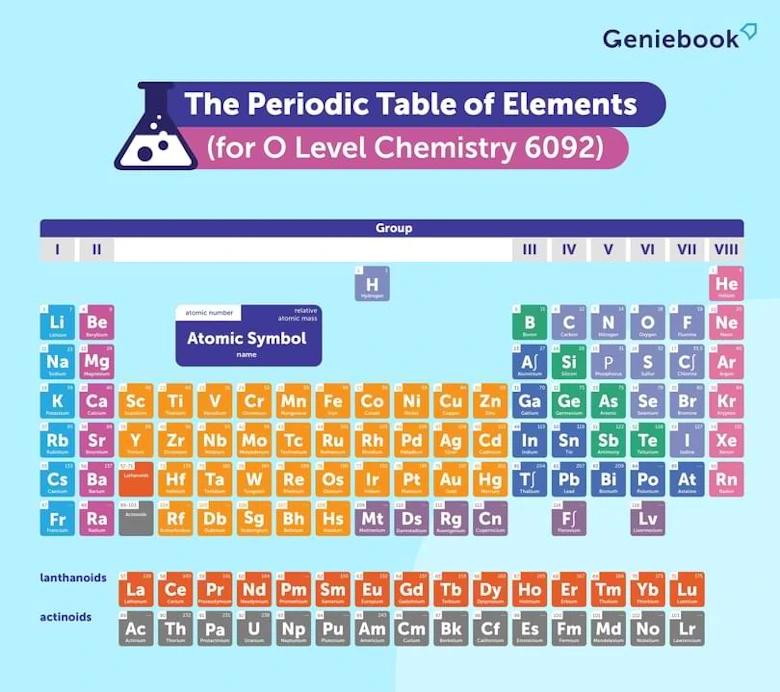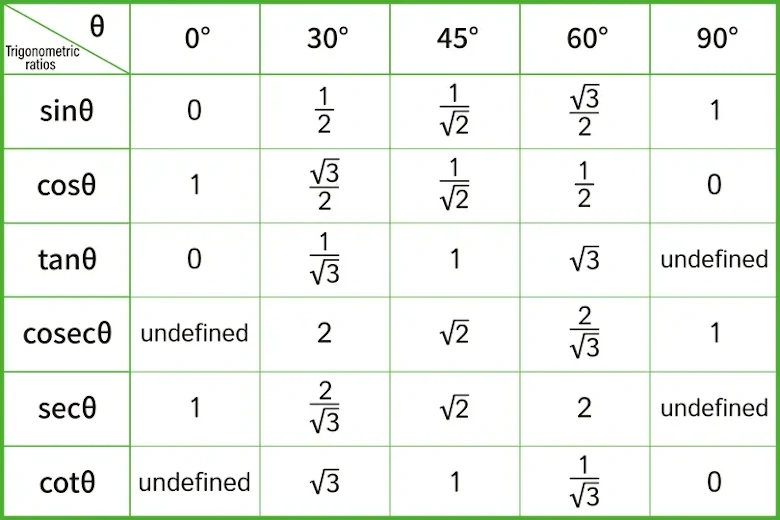The importance of the Periodic Table in O-level Chemistry
- Tags:
- Chemistry

The periodic table is a fundamental tool in the study of chemistry, especially for O-Level students. It serves as a concise and organised framework that allows students to understand and predict the behaviour of elements. In this article, we will explore the significance of the periodic table in O-Level chemistry and how it facilitates the learning process.
Let's dive in!
Why is the Periodic Table important in O-level chemistry?
In the realm of chemistry, the periodic table stands as a pillar of knowledge. It provides a comprehensive overview of the building blocks of matter and offers insights into the behaviour and characteristics of elements.
For O-Level students, the periodic table is a fundamental resource that aids in understanding various chemical concepts and phenomena.
Periodic Table Historical Background
The development of the periodic table can be traced back to the early 19th century. Chemists, such as Dmitri Mendeleev and Julius Lothar Meyer, made significant contributions to its creation. Through their studies, they recognised patterns and relationships among elements, leading to the organization of the periodic table as we know it today.
Structure Of Periodic Table
The periodic table consists of rows called periods and columns called groups. Each element is represented by a unique symbol, and its position on the table provides valuable information about its atomic structure and properties. The structure allows for the grouping of elements with similar properties, making it easier for students to comprehend and analyse chemical trends.
Atomic Number & Atomic Mass
The atomic number of an element corresponds to the number of protons in its nucleus. It determines the element's identity and its position on the periodic table. Atomic mass, on the other hand, represents the sum of protons and neutrons in an atom. These two properties are crucial in understanding the arrangement and organisation of elements on the periodic table.
Groups & Periods
Groups, also known as families, are the vertical columns on the periodic table. Elements within the same group exhibit similar chemical properties due to their identical valence electron configuration.
Periods, on the other hand, are the horizontal rows on the table, and they represent the energy levels or shells of the elements.
Properties of elements
The periodic table provides valuable insights into the properties of elements. By examining an element's position, students can determine its state (solid, liquid, or gas), melting and boiling points, atomic radius, electronegativity, and other characteristics. These properties allow for a deeper understanding of the behaviour and interactions of elements.
Trends In Periodic Table
The periodic table showcases several trends that exist among elements. These trends include atomic size, ionisation energy, electron affinity, electronegativity, and metallic and non-metallic character. Understanding these trends helps students predict and explain the behaviour of elements and their compounds.
Chemical Bonding
Chemical bonding is a crucial concept in O-Level Chemistry and the periodic table aids in understanding different types of bonds. Elements in the same group tend to form similar bonds, while elements in adjacent groups exhibit contrasting bonding patterns. The periodic table acts as a visual representation of these bonding tendencies, allowing students to comprehend and predict chemical reactions.
Reactivity & Valency
The reactivity of an element is closely related to its position on the periodic table. Elements with low ionisation energy and high electronegativity tend to be more reactive. Valency, which determines the number of bonds an element can form, can also be deduced from the periodic table. This information is crucial in balancing chemical equations and understanding the behaviour of elements in compounds.
Acids, Bases & Salts
The periodic table plays a vital role in the study of acids, bases, and salts. By analysing the elements involved in these compounds, students can predict their chemical behaviour and identify their properties. This knowledge allows for a better understanding of chemical reactions, pH levels, and the formation of salts.
Transition Elements
The transition elements, located in the middle of the periodic table, possess unique properties that set them apart from other elements. Their ability to form multiple oxidation states and exhibit variable valencies makes them crucial in various chemical reactions. Understanding the transition elements enhances students' comprehension of complex chemical processes.
Noble Gases
The noble gases, situated in Group 18 of the periodic table, are known for their low reactivity and stable electron configurations. They play a significant role in O-Level chemistry, particularly in understanding the concept of inertness and the use of noble gases in practical applications.
Importance in Chemical Reactions
The periodic table serves as a foundation for understanding chemical reactions. By referring to the table, students can identify the reactants and products involved in a reaction and comprehend the underlying principles governing the reaction. It allows for the prediction of products, stoichiometry, and the balancing of equations.
Conclusion
The periodic table is an indispensable tool for O-Level chemistry students. Its organised structure and comprehensive information enable students to explore and understand the behaviour, properties, and interactions of elements. By utilising the periodic table effectively, students can enhance their problem-solving skills and develop a solid foundation in chemistry.
FAQs (Frequently Asked Questions)
What is the significance of the periodic table in O-Level chemistry?
The periodic table is significant in O-Level chemistry as it provides a structured framework for organising and understanding the elements. It helps students identify patterns and trends in element properties, predict chemical behaviour, balance equations, and comprehend the relationships between different elements.
How does the periodic table aid in understanding chemical bonding?
The periodic table aids in understanding chemical bonding by grouping elements with similar properties together. Elements in the same group tend to have similar valence electron configurations, which determine their bonding behaviour. This allows students to predict the types of bonds formed by elements and understand the principles behind chemical reactions.
What are the trends observed in the periodic table?
There are several trends observed in the periodic table, including atomic size, ionisation energy, electron affinity, electronegativity, and metallic and non-metallic character. These trends provide valuable information about how certain properties of elements change as you move across periods or down groups in the table.
How does the periodic table assist in predicting chemical reactions?
The periodic table assists in predicting chemical reactions by providing information about the reactivity and valency of elements. Elements with low ionisation energy and high electronegativity tend to be more reactive, while valency determines the number of bonds an element can form. By knowing these characteristics, students can anticipate how elements will interact and form compounds in chemical reactions.
Why are the transition elements important in chemistry?
Transition elements are important in chemistry because they exhibit unique properties and play significant roles in various chemical reactions. They can form multiple oxidation states and have variable valencies, allowing them to participate in complex reactions. Transition elements also find applications in catalysts, coordination compounds, and industrial processes.


 SG
SG  VN
VN 


















